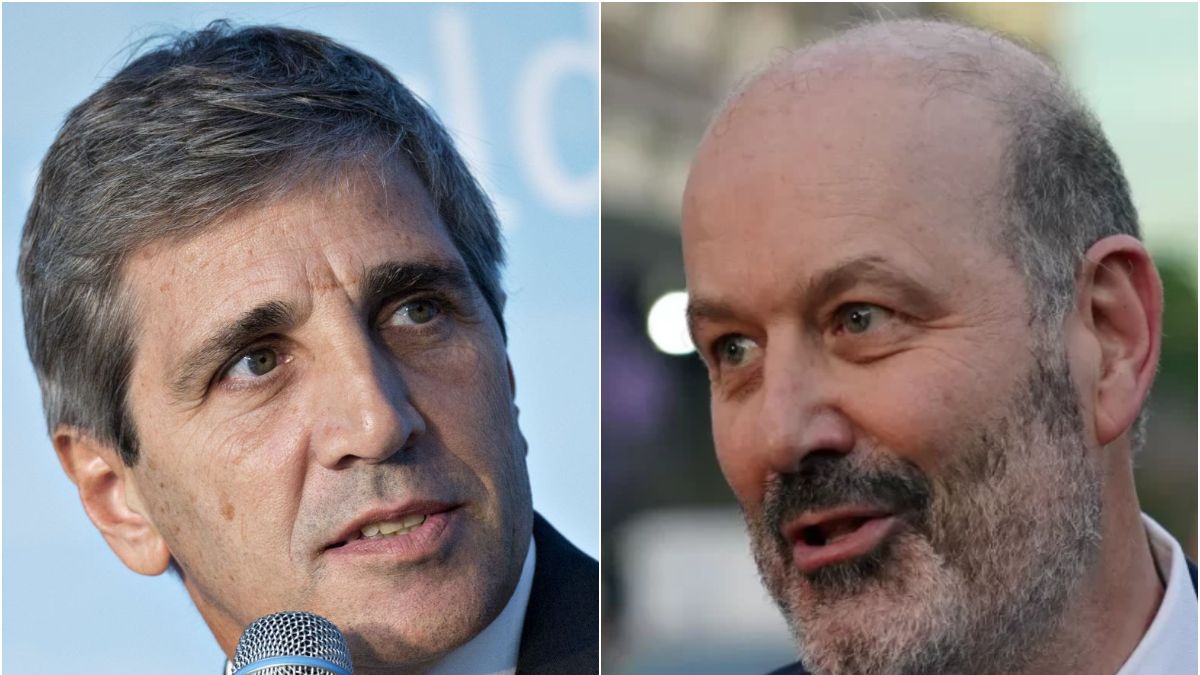Argentina seems condemned to repeat its economic history and its officials, again and again. As if it were a predictable script, The country today revives exchange tensions, financing problems and adjustment recipes that marked the 2018 crisis. At that time, the duo Federico Sturzenegger-Luis Caputo tried in adjacent periods to contain the storm with the help of the IMP. Today, the emerging disorganization scenario, product of the excesses of the “Carry Trade” is repeated, with amazing fidelity.
He dollar It has been tracing its price and the BCRA continues to yield reservations, the inflation It touched an apartment in 2.4%, but can be overheated after the imminent correction of the current “1% monthly 1%.
The credibility of economic policy with the same officials of yesteryear, is again in check. In 2018, the official bet was that an agreement with the IMF would restore market confidence. Today, the protagonists insist that The situation is different-and it is true, only in the fiscal aspect-, but the monetary expansion numbers and many of the facts tell another story. Same debt ratio/GDP, exchange rate appreciation, current account deficitand other issues, which do not change the level of Risk country-that is the same as in 2018-the fall in the image of the government and, the distrust of the markets
This article is not just an analysis of the past crisis. It is an archetype of what we are living at this time. If you still doubt the similarities between 2018 and 2025, keep reading. Because what happened then not only helps us understand the present, but also gives us disturbing clues about what could come.
The economic program implemented by the Government of Mauricio Macri as of December 10, 2015 failed to reduce macroeconomic imbalances, which, instead of mitigating, were expanded during the first two and a half years of management. For the beginning of 2018, the Argentine economy presented three fundamental mismatches: fiscal deficit, current account deficit and a balance of the Central Bank (BCRA) where the paid liabilities (Lebac, Pases and Leliq) exceeded broadly to the unpaid (monetary base). Consideration: that was the genesis of the imbalances that besieged us until today, including anarco-capitalist engineers.
Given those structural vulnerabilities, any external shock could trigger a crisis. In this context, the increase in country risk and distrust of the indebtedness speed caused a “Sudden Stop” (Calvo, 1998). The demand for local bonds and assets collapsed, which resulted in the interruption of external financing and forced an abrupt adjustment. As a consequence, the interest rate and the real exchange rate increased, while economic activity contracted in an environment of growing country risk.
Between April and September 2018 (Presidents of the BCRA: Sturzenegger and Caputo, respectively), the weight suffered a devaluation of 97.53%, despite the intervention of the BCRA with sales for USD 24,000 million. The inflationary impact was immediate: the annualized rate of the last three months of 2018 jumped from 29% in March to 66% in September (+127.58%)
In the absence of dollars and the pressure on the exchange market, the government resorted to the International Monetary Fund (IMF). However, The first agreement reached in June 2018 collapsed in just two months. While The IMF expected the USD 50,000 million loan and a stronger program to restore market confidence, the Government breached several of the agreed goals. As a result, the country risk continued to climb, reaching the 783 basic points on September 4, 2018, a level similar to that registered yesterday, March 18, 2025. Let us add that, for the excesses committed, on September 25, 2018, Christine Lagarde asked Macri to dismiss Caputo, if he wanted to receive new disbursements.
The growing uncertainty and the fall of the first agreement with the IMF forced the Government to renegotiate the terms of financing. In this context, a new agreement was signed that extended the loan to USD 57.1 billion and advanced disbursements for 2018-2019. The new economic program focused on three axes that should not differ from any aid in 2025: “Primary fiscal deficit”, “null growth of the monetary base” and a scheme of “free exchange exchange with areas of non -intervention of the BCRA”.
The big question was whether the Government would stop the inflationary escalation and stabilize the economy before the elections. History showed that he did not get it and Macri lost the elections. The economic and political wear derived from the crisis contributed to a strong electoral defeat in October 2019.
The four columns of that new agreement with the IMF
The emergency economic program based on that new agreement with the IMF was structured on four fundamental pillars:
- Increase in the amount of the loan and reconfiguration of the disbursement schedule: The original loan was extended and USD 19,000 million were advanced, allowing the financial needs of the Treasury until December 2019, when we would change, becoming the first political space that would not renew second term since 2003.
- Accelerated fiscal convergence: It sought to achieve primary fiscal balance in 2019 and generate a 1% surplus of GDP in 2020 to guarantee the sustainability of public debt.
- New restrictive monetary policy: The monetary emission was drastically reduced with the aim of curbing inflation. However, this caused a rise in interest rates, contracting credit and deepening the recession.
- New exchange rate regime: A flotation scheme was established with non -intervention areas of the BCRA. However, persistent exchange volatility questioned the efficacy of the scheme.
“No one bathes twice in the same river” (Heraclitus)
Although there are differences as Minister Caputo says, the similarities between the 2018 crisis and the current situation are notable. In both cases, the combination of high indebtedness, a restrictive monetary regime and a contractive fiscal policy deepened exchange tensions.
Although official speeches strive to highlight differences, the reality is stubborn: several worrying symptoms that arise on the board are generating the same results. In 2018, the Government opted for a monetary tourniquet, the free exchange rate of the exchange rate between bands and the IMF’s help. In 2025, the strategy is listed and the effects can be just as devastating: recession, inflation and exchange uncertainty that does not truce.
That adjustment and agreement with the IMF was presented as a bridge towards stability, but ended up deepening the crisis and promoting inflation. The déjà vu is impossible to ignore. The structural fragility, the precariousness of today’s reserves and the indebtedness pressure push the country back towards a scenario of exchange syncope.
Any coincidence with the current reality is no coincidence. Argentina seems to be trapped in a recurring crisis loop, and if something taught us history, it is that ignoring the lessons of the past only guarantees us to repeat them in the future.
Director of Esperanza Foundation. https://fundacionesperanza.com.ar/ UBA postgraduate professor and masters in private universities. Master in International Economic Policy, Doctor of Political Science, Author of 6 Books
Source: Ambito
David William is a talented author who has made a name for himself in the world of writing. He is a professional author who writes on a wide range of topics, from general interest to opinion news. David is currently working as a writer at 24 hours worlds where he brings his unique perspective and in-depth research to his articles, making them both informative and engaging.




